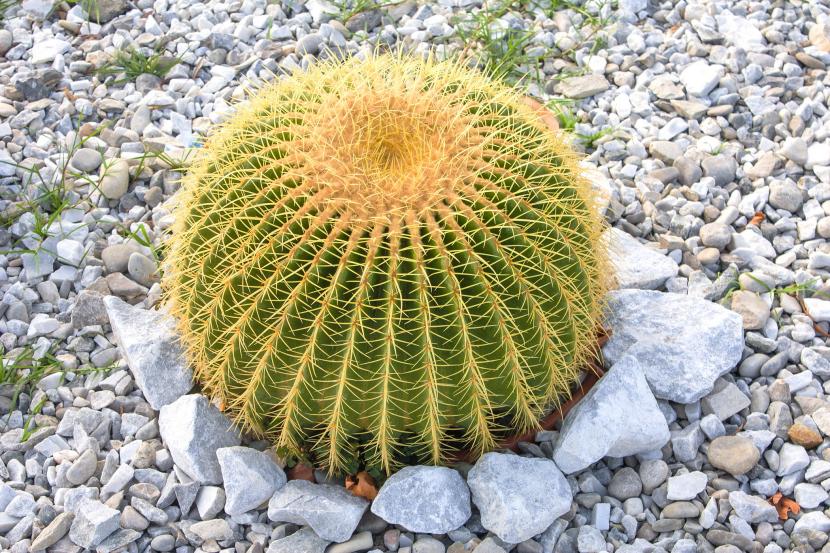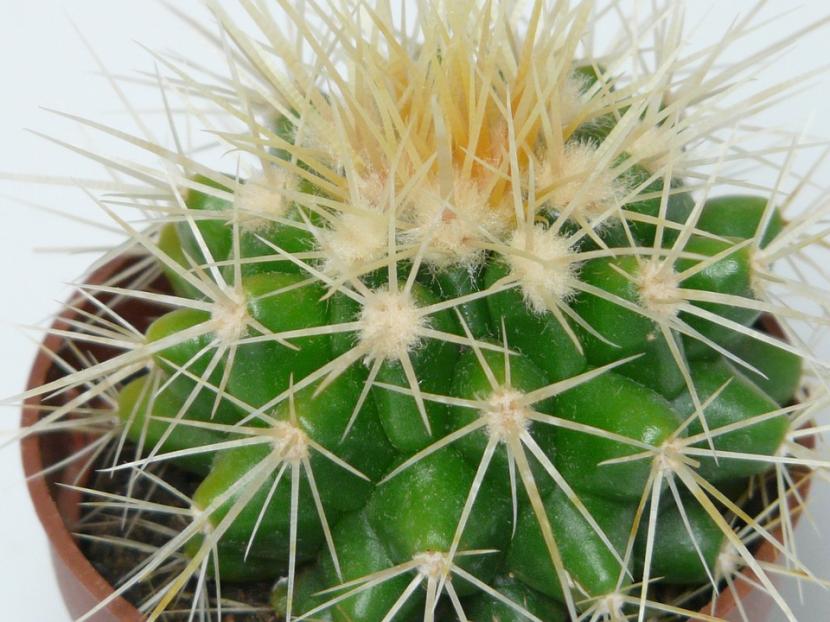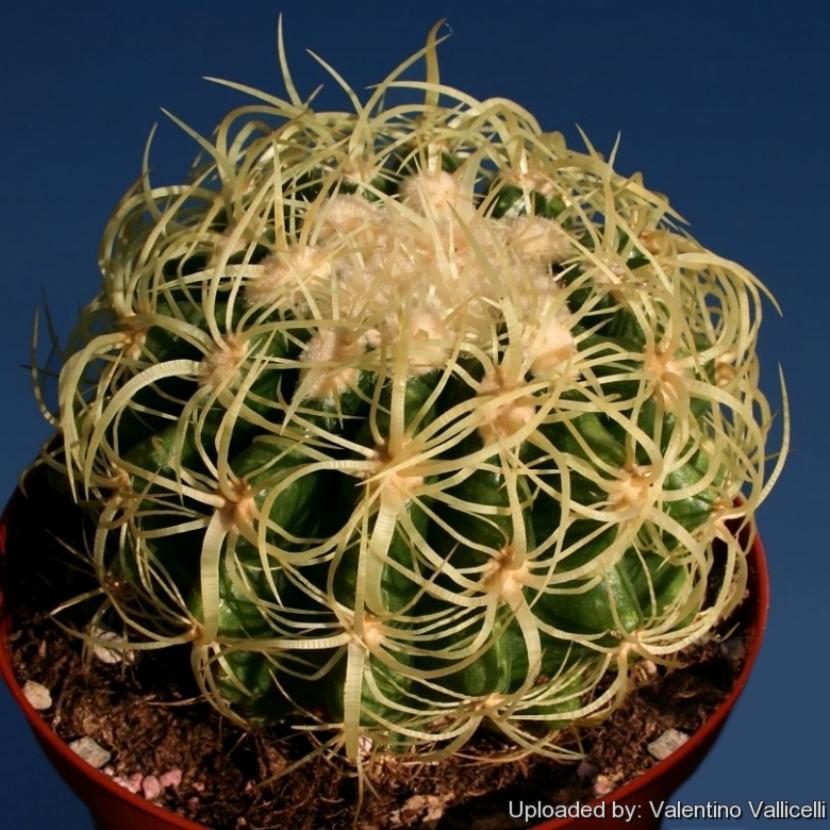
It is probably one of the most famous cacti in the whole world. The Echinocactus grusonii It is a barrel-shaped plant that is not lacking in any succulent collection, nor is it often found in gardens.
While armed with long, sharp spines, this cactus is always a pleasure to have as its cultivation is not complicated at all.
Features

Echinocactus grusonii is the scientific name of a cactus that was described by Heinrich Hildmann and published in Monatsschrift für Kakteenkunde in 1981. Today it is known by various names, such as mother-in-law's seat, golden ball, golden barrel or hedgehog cactus. It is endemic to central Mexico, from Tamaulipas to the State of Hidalgo. Despite its popularity, is included in the list of endangered species.
It is characterized by have a globular shape with a height that can exceed one meter and a diameter of around 50 centimeters. It has between 21 and 37 thin, rectilinear ribs, which have whitish woolly areolas and later grayish ones, from which between 3 and 5 central spines of about 5cm arise, and about 8-10 radial spines of more than 3cm in length. Flowers grow from the upper areolas, measuring between 4 and 7cm in length and about 5cm in diameter in spring and only in adult specimens.
Varieties
The main varieties are:
Echinocactus grusonii var. albispinus

Image from Cactusguide.fr
Echinocactus grusonii var. brevispinus

Image from Cactus-art.biz
Echinocactus grusonii var. curvispinus

Image from Llifle.com
Farming

If we talk about cultivation, it is really very simple. Needs a sunny but frost-protected exposure. Adult and acclimatized specimens can withstand occasional hailstorms without problems, but the youngest ones usually have a hard time when the temperature drops below 0 degrees.
Even so, it is a cactus suitable for beginners since you have to water it twice a week in summer and every 2-15 days the rest of the year, and fertilize it with liquid fertilizers for cacti from early spring to early autumn following the indications specified on the product packaging. Likewise, for it to grow well it will be necessary to transplant it in spring into a 2-3cm wider pot.